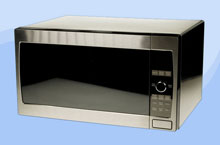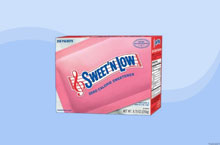Millions have been made from accidental discoveries, proof of the adage that sometimes it is better to be lucky than good.
Coca-Cola (NYSE: KO - News) and Pepsi (NYSE: PEP - News) were birthed as medicinal remedies. Plastic was first synthesized in a failed effort to reproduce the shellac once made from beetle husks and Charles Goodyear, as in Goodyear (NYSE: GT - News), made no secret that his revolutionary process for vulcanized rubber was discovered randomly.
Less trivial is the X-ray machine, which revolutionized medicine and has saved countless lives. Its technology was stumbled upon as a byproduct of an incorrectly staged physics experiment with cathode rays.
Here are some products that went from being missteps to famous discoveries:
 |
Pfizer (NYSE: PFE - News) chemists were developing a pill to treat cardiovascular ailments. In 1991 something came up (literally) that sidetracked those efforts: Test subjects exhibited a rather virile side effect to the treatment.
The pill, later named Viagra and approved by the FDA in 1998, proved a bust in terms of treating heart disease. But the unexpected benefit pumped up its maker's bottom line and set the stage for a brand-new industry.
Today, drugs to treat erectile dysfunction command more than $5 billion a year in sales globally. Of that take, Viagra accounts for about $1.9 billion, but its chief rival in the space, Eli Lilly's (NYSE: LLY - News) Cialis, closing in on parity.
 ©Target |
The discovery of Viagra is only one of the great accidental discoveries to cheer middle-aged men.
For those battling a problem above the shoulders -- thinning and falling-out hair -- the drug Minoxidil, branded by McNeil-PPC, part of the Johnson & Johnson's (NYSE: JNJ - News) family, as Rogaine.
The drug-laced foam was synthesized after Upjohn researchers realized that a blood pressure drug, Loniten, had the side-effect of thickening and darkening hair. Upjohn was later sold to Pfizer and Rogaine was among the brands shipped over to Johnson & Johnson when the company sold its consumer-focused division in 2006.
Applied to the scalp, the drug is not touted as a full-on cure for baldness; its maker does boast of studies where 85% of male test subjects regrew hair after four months of twice-daily use.
Also used by women suffering from hair loss, Rogaine sells roughly $60 million a year, according to health care analysts at Information Resources. Earlier this month, the Food and Drug Administration approved a generic version made by Perrigo (Nasdaq: PRGO - News) that is expected to hit shelves next year.
 ©Target |
As a Seventh Day Adventist, Dr. John Harvey Kellogg adhered to his faith's vegetarian diet as well as the teachings of the cultish, nutritional hardliner Sylvester Graham, the inventor of graham crackers.
In 1894, while employed by the Battle Creek Sanitarium in Michigan, he began experimenting with ways to make that restrictive diet more palatable and an inexpensive way to feed his charges.
Leaving some boiled wheat unattended, it went stale. Attempting to salvage it by rolling it into dough, Kellogg (aided by his brother Will) found that it tore into pieces and refused to hold a shape. Undaunted, they toasted the flakes and were pleasantly surprised by the result.
After a bit of trial and error, the brothers decided to use corn, instead of wheat, as the main ingredient. The result was deemed tasty enough by patients that Will founded a company bearing the Kellogg's (NYSE: K - News) name to sell their corn flakes.
Dr. John, however, opted out of the venture, angered that his brother tampered with the healthful nature of the recipe by adding sugar to the mix. It should be noted that the elder Kellogg wasn't so much worried about obesity or bad teeth; as a staunch practitioner of sexual abstinence, he theorized that his corn flakes would suppress physical urges. Sugar, an aphrodisiac in his opinion, would undo that.
Further revolutionizing how the world eats breakfast, a patient at Kellogg's sanitarium, C.W. Post, used his own variation of the cereal to create his own company and a competing product, Post Toasties.
 |
It is hard to imagine the hassle we all went through to reheat lunch or fill a bowl of popcorn before the advent of the microwave oven.
Your beeping buddy in the kitchen owes its existence to a Raytheon (NYSE: RTN - News) engineer who, back in 1945, was experimenting with a device called a magnetron, a microwave-emitting tube used as part of military radar systems. As he tinkered with the device, he noticed a candy bar in his pocket melting.
Suspecting the radiation was cooking his snack, the engineer set out to test the theory. In doing so, Percy Spencer discovered a revolutionary way to cook and goes down in history as the first person to make microwaved popcorn.
Built in 1947, Raytheon's first take on the oven was targeted at commercial uses -- it was more than 5 feet tall and cost roughly $5,000. In 1967, Amana, a Raytheon division, began selling sub-$500 versions intended for at-home kitchen use.
 ©Target |
The discovery and subsequent marketing of saccharin as an artificial sugar substitute might never have happened if there had been an "Employees Must Wash Hands" sign nearby.
In 1879, a chemist by the name of Constantin Fahlberg was working with coal tar. He finished his day's work and apparently headed home for dinner without stopping to wash up.
While dining with his wife, the muck-handed scientist noticed that everything he ate had a distinctly sweet taste. Connecting the dots, he realized his hand residue was the source.
Saccharine's cousin, aspartame, has a similar accidental history. It was discovered in 1965 by chemist James M. Schlatter, who was trying to fashion an anti-ulcer medication. It was later developed and branded as NutraSweet by Monsanto (NYSE: MON - News) before being sold for $440 million to J.W. Childs Equity Partners, a Boston-based private investment firm, in 2000.
www.us.yahoo.com